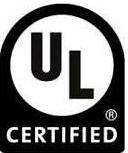DFW's Largest Custom Sign Company |
||||
|
Call Now! We're waiting!
Our Team of Experts are standing by to Answer Your Questions: (800) 333-7137 toll-free (214) 339-2227 Dallas (817) 861-1234 Fort Worth/Arlington Areas (254) 582-7446 Hillsboro/Waco Areas Sherman/Greenville/Paris (903) 561-5959 Athens/Oklahoma (940) 365-3433 Denton/North Texas Southern Oklahoma Areas (972) 850-3300 Dallas Areas Email our Sales Team: |
||||
The First Programmable SignIn the early days of the 20th century, the bustling streets of New York City were already home to a wide array of advertising and signage. But in 1910, something new and revolutionary was about to change the face of the city: the first programmable signs. Born in 1867 in Ohio, Charles Francis Jenkins had already made a name for himself in the field of motion picture projection. In 1894, he patented a machine that could project moving pictures on a screen. But Jenkins wasn't content to stop there. He had a vision for a new kind of advertising, one that would be more eye-catching and attention-grabbing than anything that had come before. Jenkins's idea was to create a sign that used moving images to capture people's attention. He experimented with different designs and technologies, eventually settling on a system that used a series of rotating discs with sequential images painted on them. By controlling the speed of the discs, Jenkins was able to create the illusion of motion. In 1910, Jenkins installed his first moving sign in Times Square. It was a simple design, with just two discs rotating in opposite directions but it was enough to attract attention and generate buzz. Soon, other businesses in the area were clamoring to have their own moving signs. Jenkins continued to refine his technology over the years, creating more complex and impressive signs. He even patented a system for synchronizing multiple signs, allowing them to work together to create elaborate displays. By the 1920s, Jenkins's moving signs had become a fixture of Times Square, and they were spreading to other cities as well. Douglas Lee was an inventor and entrepreneur who had already made a name for himself with his electric sign company. He had a knack for coming up with new and exciting ideas, and in the early 1920s, he began to experiment with ways to make signs move. Around the same time, Dorothy Shepherd was working as an artist and designer in New York. She was known for her creative use of color and her ability to bring her designs to life. When Lee approached her with the idea of creating moving signs, she was intrigued and eager to collaborate. Otto Messmer, a cartoonist who had already gained fame for his creation of the popular character Felix the Cat, was brought in to help. His experience with black and white cartoons was perfect for this project, and Messmer was known for his imaginative storytelling and his ability to bring characters to life through animation. At first they worked with various types of motors and gears, trying to find a way to make the signs move smoothly and seamlessly. Eventually they came up with a working design. Small motors were attached to the back of the sign. Each one controlled a different part. By coordinating each motor, and each part, they could create an illusion of motion on the sign. Together, on April 28, 1937, they created the first moving signs in New York. It was installed on Broadway and had 2000 lightbulbs that could be turned on and off in sequence. The first image was very rudimentary, a prancing horse and ball tossing cat, rendered through blinking yellow bulbs. The sign was an instant success, drawing crowds of onlookers who marveled at the animated cat. From there, Lee, Shepherd, and Messmer went on to create many more moving signs, each one more elaborate and imaginative than the last. They created signs for all sorts of businesses, from restaurants and bars to department stores and car dealerships. The impact of these signs was immediate and profound. They transformed the advertising landscape, giving businesses a new way to stand out and grab people's attention. They also helped to shape the visual identity of Times Square, which became synonymous with the bright lights and moving images of the signs. Today, they are a common sight in cities all over the world, but it all started with the visionary work of Douglas Lee, Dorothy Shepherd, and Otto Messmer. But the signs weren't just a boon for businesses. They also had a cultural impact, shaping the way people thought about technology and innovation. They became a defining feature of the American advertising landscape, and they helped to shape the visual culture of the country for decades to come. Today, of course, the technology behind the signs has evolved far beyond what Jenkins could have imagined, but the legacy of his innovation lives on. Share on Facebook | Share on Twitter | Share on LinkedIn | Send via Telegram  
FOR ORDERING OR ASSISTANCE CALL:214-339-2227 254-582-7446 817-861-1234 903-561-5959 940-365-3433 972-850-3300 800-333-7137 TOLL-FREE
Signs Manufacturing & Maintenance Corp.
Business hours are 07.00 a.m. to 5.00 p.m. Monday thru Friday (Central Time) Emergency Service Available 24/7 Copyright© 1979-2023 Signs Manufacturing Corporation - ALL RIGHTS RESERVED |
||||








